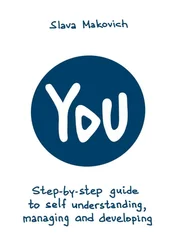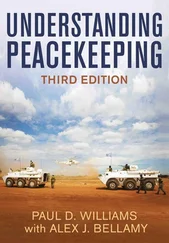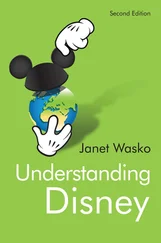The level of scientific curiosity about sex is also high, despite some of my colleagues’ views. There is a 553-page book (at least in the first edition) called The Female Orgasm (Fisher, 1973), and not even a small pamphlet on the female sneeze. Yet both an orgasm and a sneeze entail similar physiological processes: a buildup of muscular tension released in contorting spasm(s). There must be more intrinsic interest in the former than the latter, even among us (usually) disinterested scientists, to explain the disparity in research. Finally, my courses do not suffer from a paucity of student interest—a fact that even my most skeptical colleagues cannot ignore; indeed, sex courses are often the most popular offerings on college campuses.
In short, sex is very interesting to most of us, so why not study and learn about a subject that piques human curiosity? I think this “high level of interest/curiosity” argument is a convincing one, assuming that all else is equal in terms of sex’s scientific importance and health implications relative to other domains of life. But some of you are surely thinking, Aye, there’s the rub, because all else is not equal . Sex may pique our curiosity, but it is not on par with other domains of life in its scientific importance or its health implications!
I beg to differ. In terms of scientific importance, sex is on par with, or even trumps, some of the biggest scientific puzzles. Not only do we not fully understand why sex exists (i.e., why some species, for example, reproduce using male and female forms; see chapter 3), but sex is often the clue to unravelling the mystery of a species as a whole, or at least it is never ignored when biologists (e.g., zoologists) study a species as a whole. The same can be said for the study of humans. To understand our sexuality is to understand ourselves. There is an ancient Chinese proverb that says, “To understand the head, one must begin by studying the tail.” (Using an animal metaphor to make its point, this proverb is, of course, meant to reveal the secret to understanding human beings.) Sigmund Freud, the famous psychoanalyst, and evolutionary psychologists (strange bedfellows, indeed!) have thought similarly, suggesting that sex is the major scientific puzzle of human nature, and that to understand sex is to understand human beings. So, the hows and whys of the way we think, feel, and behave are determined, arguably, by our sexuality.
However, one does not have to resort to arguing from the scientific value of decoding the mystery of human nature to make the point that sex is an important academic pursuit. Sex clearly has a profound effect on humans on practical levels. Consider two sisters who are close in age but who differ in their sexual orientation, one being straight and the other lesbian. Will their life trajectories be the same? The answer is, of course, in some ways, yes, but in many others, no. The sisters ultimately will have very different lives, in large part because of their differing sexual orientations. Sexual orientation—like many components of sexuality—plays a profound role in our social circumstances and life choices, including whether we marry, where we live, or whether we have children. For example, the majority of heterosexual women give birth to children and the majority of lesbians do not. Data from the National Survey of Family Growth (NSFG) in 2002 confirm this, with 65 percent of heterosexual and bisexual women having given birth to a child, compared to 35 percent of lesbians. Thus, the study of sexuality is clearly relevant to a variety of scientific disciplines, including demography (Baumle, in press), which attempts to understand trends related to marriage and fertility, among other issues.
Beyond basic scientific interests, sexuality also relates to health and social issues, often profoundly so. The list of relevant health and social ills is long: overpopulation, environmental degradation, gender inequality, sexually transmitted infections/diseases, divorce/family disruption, and marital and child abuse. Take, for example, the issues of overpopulation and the environment. Does anyone think that these are not affected by people’s sexuality (e.g., their contraception practices)? This is not to say that sex is the only contributing factor to these and other health and social issues, but rather that all of them are affected by human sexuality, and for some of these issues, the case could be made that sexuality is the underlying factor in their development. Thus, if one truly wants to improve the world, sex is a subject that cannot to be ignored.
So, the fuss about sex is well deserved. Sex affects much of our lives, and its meaning and ramifications do not just have to do with the “act” itself. At a most basic level, sex is about human life. Interestingly, major health organizations such as the World Health Organization (WHO) are recognizing the central role of sexuality in human life, along with the myriad of ways it impacts health. Consider WHO’s (n.d.) working definition: “Sexuality is a central aspect of being human and encompasses sex, gender identities and roles, orientation, eroticism, pleasure, intimacy and reproduction.”
At this point you may be wondering whether I am perhaps inadvertently undermining the task ahead: to convince the reader that asexuality is an important scientific inquiry. Note that when I refer here to asexuality, I mean the real deal—that is, a complete lack of sexual attraction and/or sexual interest (see chapter 2 on definitions)—and not just a middle-age, on-again, off-again malaise about sex, as mentioned above. And so, given sexuality’s central importance in human life, is it then true that hard-core asexuality (if I am permitted this description), if it is the opposite of sexuality, must be unimportant, a nonissue, a mere footnote in the great (sexual) story of life? Why does the study of asexuality matter?
There are many reasons why it matters. In fact, I think the study of asexuality matters so much that I was compelled to write this book on it. Here are some of my reasons why asexuality matters and why I am writing this book.
First, there is value in the opportunity for members of an overlooked and under-studied population to be able to read about and understand issues relevant to them. Thus asexual people might be interested in finding out more about themselves, and this is reason enough to write a book on asexuality. This is not a new concept: books are written about (and to) specialized audiences all the time.
But this book is written not just for asexual people, or even just for research scientists studying asexual people. It is also written for anyone interested in learning more about sexuality. For example, a book on asexuality may satisfy curiosity—both scientific and public—about a sexual minority that has been overlooked until recently. Thus many readers will get a chance to peek into and learn more about a world that is sexually different from theirs. Aside from satisfying curiosity, such glimpses into new worlds may have health and social benefits, as exposure to sexual minorities may help to increase general tolerance and acceptance. This idea—called the “contact hypothesis” of prejudice reduction—is often associated with psychologist Gordon Allport (1954), but the original theory has been extended beyond personal contact to encompass exposure through the media, including books (Cameron & Rutland, 2006).
A book about asexuality is also a book about sex (how could it be otherwise?), and therefore many of the reasons listed above to study sex apply equally well to the study of asexuality. For example, recall that one of the reasons to study sex is that it informs a number of scientific disciplines, including demography, which studies, among other things, fertility and marriage. There are no published data on the fertility of asexual people (a topic well worth looking into), but in the first published study on asexuality using a national probability (or random) sample of adults in Great Britain, I found that 33 percent of asexual people were currently in a long-term relationship (e.g., married), compared to 64 percent of sexual people (Bogaert, 2004). Thus, the study of asexuality reveals how variations in sexuality profoundly affect one’s (demographically relevant) life trajectories.
Читать дальше












